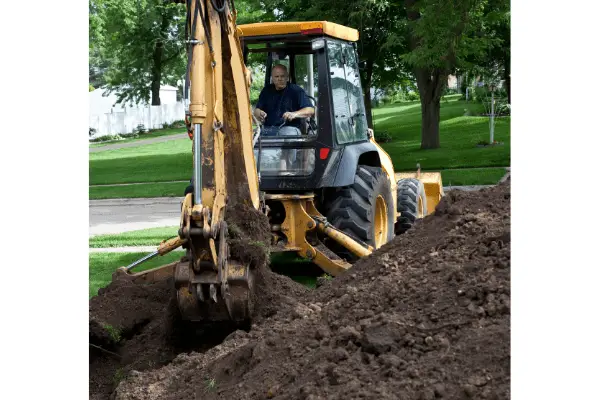Developing raw land can be expensive and overwhelming! Depending on the land that you chose, there are a lot of steps to develop it to the dream you have for it. Electricity, clearing, driveway, the list keeps going! You’re quite literally getting a blank slate! Now add in the timing of it all those puzzle pieces! Back to the water and septic, though. Does the order of their installation matter?
Typically, you will want to install the water well first and then install the septic sewer. Both are recommended for install after the house is built, but both need to be planned for BEFORE home construction.
What Does a Well and Septic Mean?
Let’s jump in by reviewing what a well and septic is to help understand the timelines better.
A well is a private drinking well. You dig far enough down to hit safe drinking water that is then brought to the surface. The EPA has a high-level overview of the different types and components if you need to dig a little deeper. (pun intended)
A septic system is essentially a wastewater treatment plant on a miniature scale for just your property versus an entire subdivision or city. The EPA has a good summary if you need a high level on how septic systems work. Basically, where any waste could leak is not where you want your drinking water to come from.
Why Install the Water Well Before the Sewer?
You’ll notice that when people talk about this, they mention both the well and septic together. The thought here is that you don’t need a septic system without water coming out of the ground yet, but do you want water coming out without a place for it to go. It’s like you need both at the same time, but they are usually installed by different contractors (not always).
Even if you are in a location with heavy permitting requirements, they generally do not care about the order as long as they are planned for before the build and installed by the final inspections.
There are a couple of reason why we installed our water well first.
- We want to make sure water is available, and we build on our property in a way that makes sense to where the water is. Location!
- We want water on site for construction. This is a lesser concern but a factor all the same.
We have friends that went with a septic first. They were living in an RV as part of their off grid adventure, and they were over the trip to the dumping station every 4 days or so. They had a water tank that made having water less of a priority.
Either way is fine as long as you have planned where the components of each will go. If you are unsure about the pieces, be sure to contact a local expert. They will be able to give you an estimate even if you aren’t quite ready to install anything just yet.

When do you Install a Septic System?
Typically, installing the septic system is advised after your home is built. However, any permits that are required for the home include the septic placement as part of it.
Typically soil tests are performed as part of the septic install and consideration of neighboring septic systems is also a factor. So even if you do not have a building permit process to work through with your local authorities, you’ll still want to know the details of the where and what type before building. It can still be installed after the home is built.
If you install the septic system before the house, there is concern that it could be damaged during construction.
While the timing of the install is not a hard and fast rule, just be aware of the risk and take the appropriate precautions to protect the septic during the build if you install before construction. Flags and spray paint can go a long way here to minimize heavy trucks with materials crushing lines or worse – the tank!
When do you Install a Water Well?
Water wells are typically installed after the construction of the home. That said, where they are located is also part of any building permit process your home requires and determined in advance of any building work.
However, in some locations, reaching water can require multiple holes drilled and be expensive. Requirements on where a well goes in relation to the septic components on top of in relation to any home is a consideration, as well. So if you want the well in one place, but ultimately, it may need to be in another location on the property to hit water. There is also a possibility, depending on where you are, that hitting water at all can be a concern.
If your local regulations allow you to choose, we like the idea of installing the well before building the home to reduce the risk of not finding water or having unexpected (and very expensive) problems after investing so much in the property by having the house built.
Plus, who wouldn’t want water available on site for construction?!
Do you Install the Well and Septic Before or After the House?
You can install the water well and septic before or after you build the house. The key is to have the systems planned before a home is built to avoid contamination issues.
Additionally, there is a possibility that construction crews coming in to build the home could damage lines. Imagine a concrete truck coming to pour a slab crushing the lines of the septic. This becomes less of a problem if you have a large piece of property, but it is something to consider.
We are installed the units before our home. We like the idea of water on site for construction, and we have not yet selected our home builder. That’s right. We have water installed, and we are saving for the septic system right now. We want to cash flow as much of the project as possible, but having the well and septic installed first means we can be flexible and live on the property practically tomorrow if needed. There is something freeing in that!
